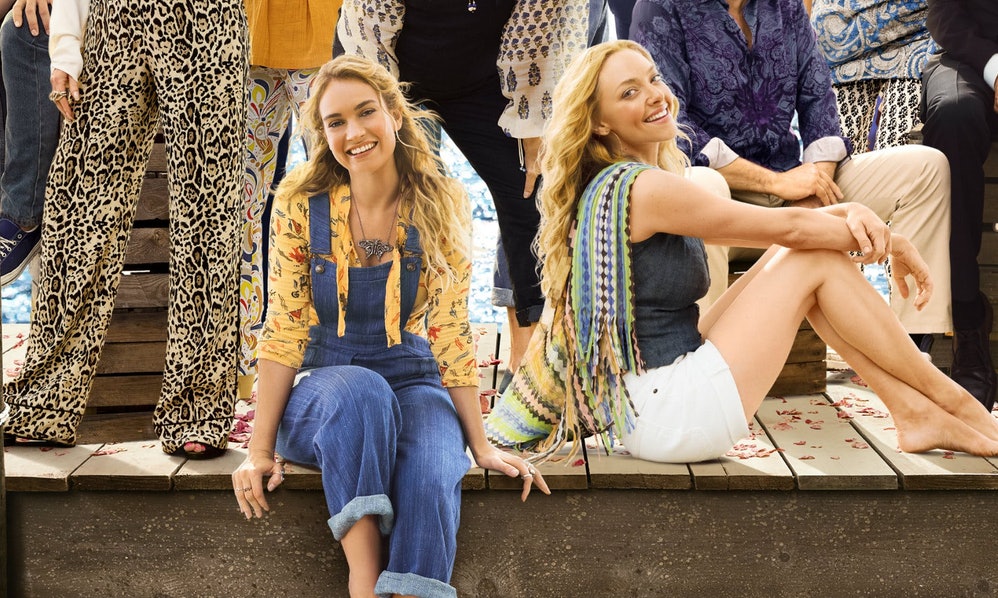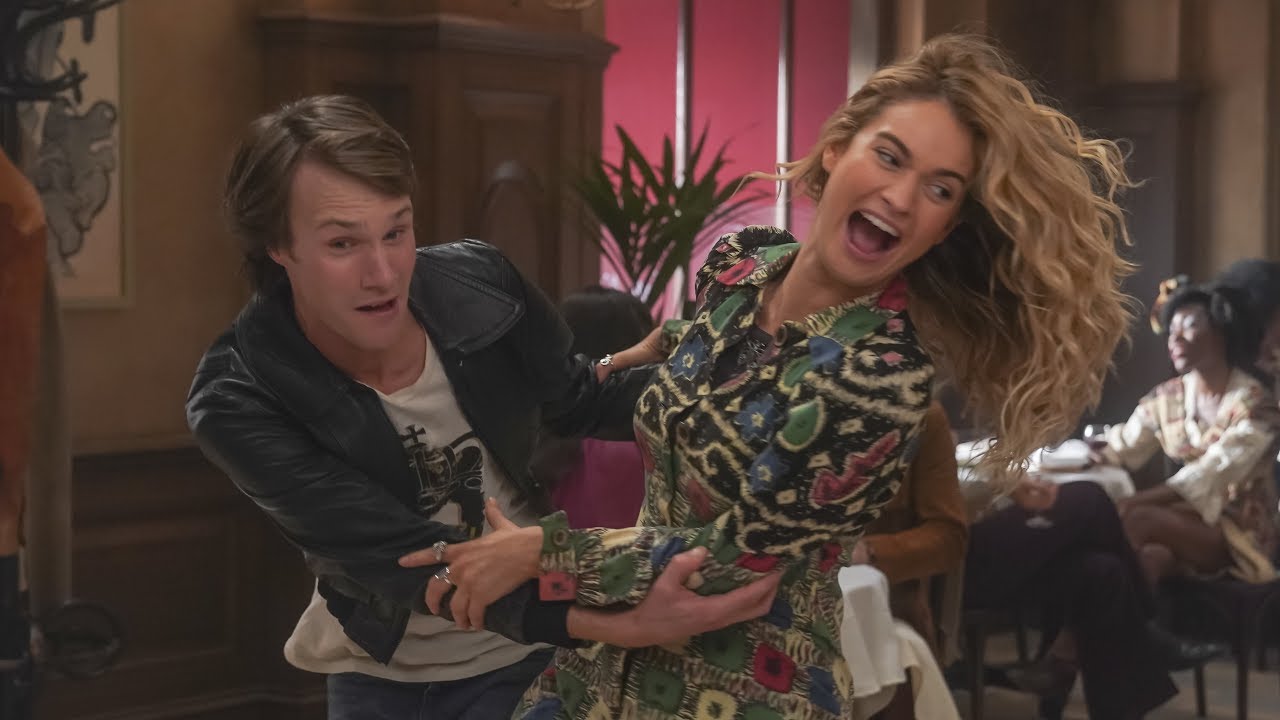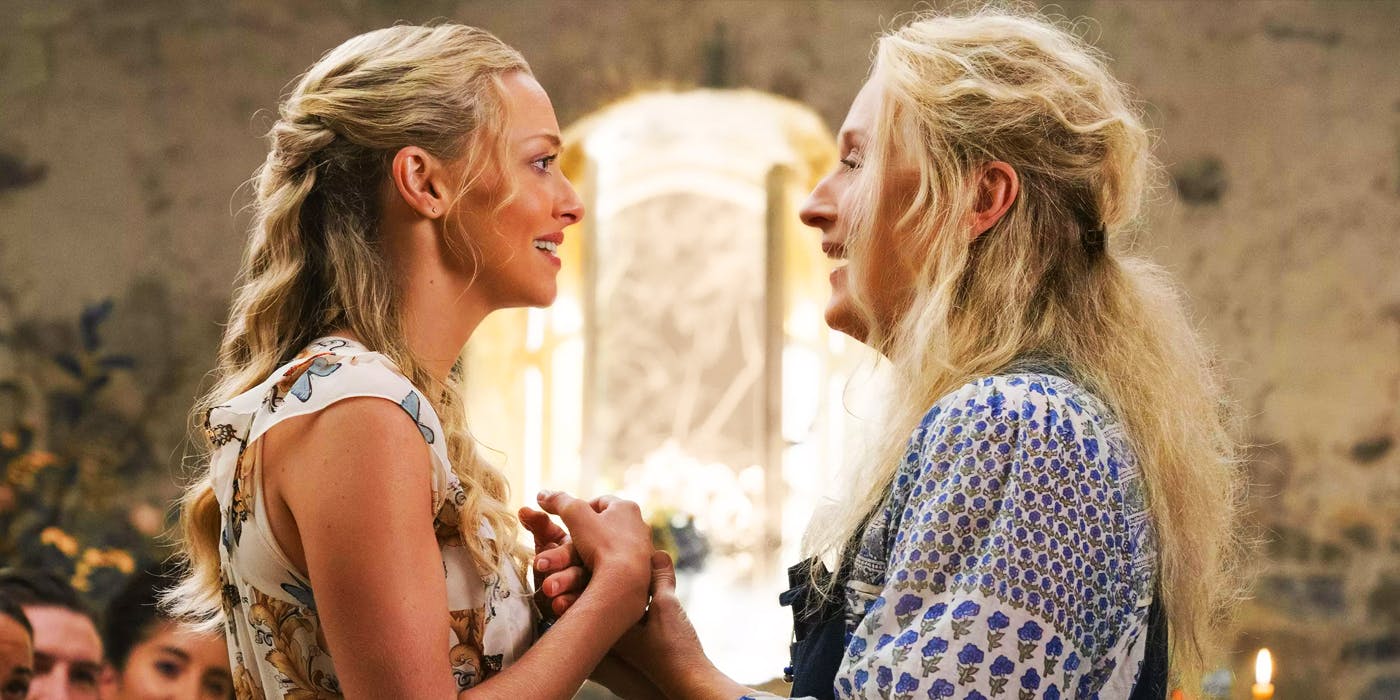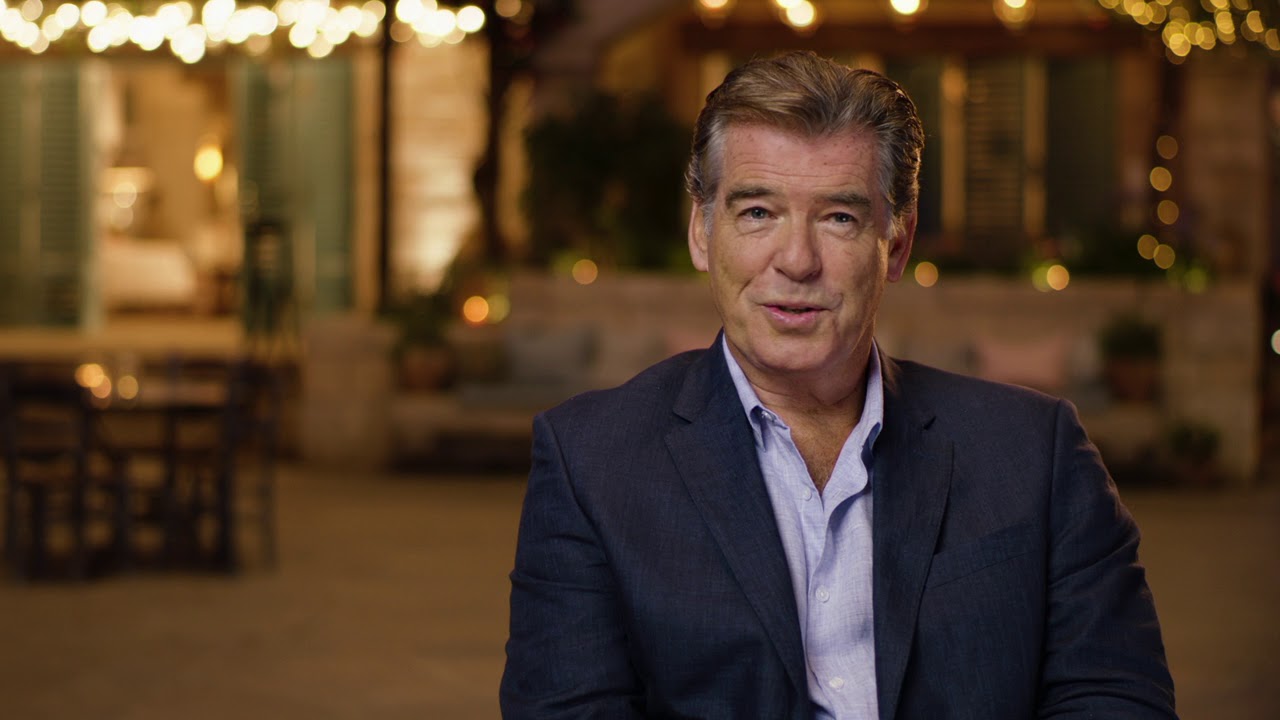The first Mamma Mia! is not a great film. In fact, more often than not, it’s a ragged and messy affair that seems to barely be keeping itself afloat. And yet, it’s still kind of wonderful. Sure, a huge part of its appeal is the indelibly delightful music of ABBA. And yes, the all-star cast who are all insanely game for any and all shenanigans the film throws at them doesn’t hurt either. But often times, the film seems to be working in spite of itself, off of a can-do attitude and endless amounts of positivity.
And so, there was every reason to be skeptical of a ten-years-later sequel. Having used up all of ABBA’s biggest hits in the first film, Mamma Mia! Here We Go Again seemed to be immediately at a disadvantage in terms of the music. On top of this, it was truly swinging for the fences, aping the structure of The Godfather Part II to create a film that told two different storylines in two different time periods, simultaneously. If this structure wasn’t ambitious enough, it also meant that the film would face the daunting task of replacing the actress with the most Academy Award nominations of all time, Meryl Streep, with a younger counterpart.
But then something funny happened. Mamma Mia! Here We Go Again turned all of those weaknesses into strengths and created a film that surpassed its predecessor by leaps and bounds, creating a truly wonderful musical film in the process.

There are few things in the world of film more marvelous than an exquisitely crafted musical. At its base form, the musical is the culmination of everything that makes film feel like film. Light, movement, color, and sound full display for all to see. A film like Singin’ in the Rain teaches a viewer everything they need to know about filmmaking and its influence can be felt in everything from La La Land to Mission: Impossible – Fallout.
One of the greatest lessons that excellent and meticulously crafted musical films teach is the value of synchrony. Standardly defined as simultaneous action, synchrony in film is not quite as easy to pin down. In the simplest of terms, it is the act of coordinating a musical cue and a visual cue. You could take any handful of moments from Singin’ in the Rain and find perfect examples of synchrony, but they’re also readily apparent in non-musical films. Take, for instance, Luke’s final moments in The Last Jedi. As John Williams’ score soars and Luke looks at a binary sunset one last time, you can feel the synchrony. It is audio and visual cues working in unison to create a greater impact, something that is hard to quantify but that makes all the difference.
The first Mamma Mia! is not a film without synchrony. Heck, the climactic scene of Meryl Streep singing The Winner Takes It All on a mountain-top is flat-out chill-inducing at times. But even its best moments frequently feel as if they were stumbled into. Not the work of intricate craftsmanship, but rather the by-product of having a movie that has over twenty musical numbers in it; it’s just kind of bound to happen at some point.
This is where Mamma Mia! Here We Go Again positively excels. Written and directed by Ol Parker, each musical number demonstrates the utmost control and restraint, resulting in much more impactful scenes. Whereas the first film shot for coverage, often cutting needlessly from one angle to the next without much intent, Here We Go Again shot for the edit. Each cut is made with control and purpose, a careful visual dance in unison with the music.

This is readily apparent in the film’s first musical number, When I Kissed The Teacher. The scene is little more than a nostalgic moment and introduction for Lily James as a young Donna (Meryl Streep’s character), and is a less-than-universally beloved song from ABBA. But Parker’s careful direction alongside the much-more-thoroughly planned choreography makes the number an opening salvo; a statement to the audience that not only is this film confident, it is also more than capable. The results speak for themselves, with musical sequences like Waterloo or My Love, My Life which create extended moments of synchrony and are flat-out jaw-dropping in their visuals.
This sure-handedness carries over into the rest of the film as well. From the very first frame, an elongated shot that soars from the vast openness of the sea to a close-up of the Hotel Bella Donna, Parker puts the film’s focus solely on the parallel stories of Donna and her daughter Sophie. In this way, the film makes terrific use of its two-pronged storytelling structure. It is constantly weaving a thematic thread about the relationship between mother and daughter, showing them simultaneously closer together and farther apart than ever before. The parallel sequences have both Donna and Sophie at roughly the same ages and in the same setting living through similarly trying times. Yet, in Sophie’s modern-day reality, Donna is no longer with her.
Which is also something to be applauded. One doesn’t necessarily expect a sequel to a jukebox ABBA musical to hit quite so many somber notes, but Here We Go Again opens with the reveal that Donna is dead, Sophie and her fiancé Sky’s relationship is on the rocks, and the vast majority of her friends and family will not be able to attend the hotel’s grand reopening. It limits the number of characters in the first act, saving them for great use later on, and keeps the spotlight on the Sophie/Donna dynamic.

A large part of this is thanks to the fact that this film is relatively unbound from the curse that plagued lots of the first film; trying to include every hit ABBA song. Whereas the first film often felt as if its narrative was bending over backward to make room for as many hit songs as possible, the second film doesn’t have this pressure and is instead able to pick-and-choose which deeper cuts it wants to utilize. The result is a narrative that drives the song choices instead of the other way around, and it makes all the difference. Moments like Sophie and Sky’s tender rendition of One of Us or Donna’s supple performance of Andante, Andante take their time and truly resonate with the film, its themes, and with the characters themselves.
And for the songs that do make a return, the film earns each and every one of them. First, there are those that get only instrumental references in the score. An easy example of this is when Donna first meets Harry Bright. The scene is underscored by an instrumental version of Harry’s verse from Our Last Summer, a song from the first film in which he recounted his few days spent with Donna when they were young. Moments like this are more than simple nods to the original, they add weight to the scenes and help to illustrate the echoes between these parallel storylines in a near-effortless way.
Then there are the songs that make full-on returns, lyrics and all. Much like the instrumentals, these returns add layers of meta-textual meaning to the narrative and are well-and-truly earned. An early standout is when Pierce Brosnan’s Sam briefly revisits he and Donna’s duet from the first film, S.O.S. in a stripped-down rendition that sees him just barely holding back sobs. It’s a beautiful moment with some of the best acting of the last decade of Brosnan’s career, made all the more impactful by the inspired and delicate reprisal.

And then, of course, there is the second-act needle drop on Dancing Queen, which is undoubtedly the most joyous two-and-half-minutes of film that will be released to cinemas this year.
After spending the first two acts of the film relentlessly throwing conflict at Sophie in the form of the absence of her mother, the storm that ruins all of her work on the hotel, and the fact that she’s lost all of her business, a savior arrives on the horizon in the form of the rest of her family; Harry, Bill, and even Sky, with boats full of new guests for the hotel. And in the film’s absolute most powerful moment of synchrony, the cut to reveal the ships in all of their colorful glory is synched directly with the glissando that kicks off Dancing Queen. And somehow, Ol Parker sustains this delirious joyfulness for the remainder of the song’s screen time. This again, generates a beautiful thematic echo to the first film, as in that film, Donna herself was who was referred to as the dancing queen. So as hope arrives for Sophie, it is quite literally heralded by joyful memories of her mother.
Which brings us to Mamma Mia! Here We Go Again’s secret weapon. As stellar as the whole cast is, younger counterparts very much included, Lily James absolutely knocks it out of the park here as a young Donna. Not only does she live up to Streep’s performance, she exceeds it. Given more to sink her teeth into and a more focused narrative, Ms. James slays the role. Her screen presence is positively magnetic, oozing the class and charisma of movie starlets long ago, ala Ingrid Bergman or Debbie Reynolds. She sells the emotional highs and devastating lows of Donna’s storyline with talent to spare. There is a monologue she gets to about midway through the film while on a boating trip with Sam, delivered in one prolonged, unbroken take, where she spills her guts and tells Sam all the reasons he should stay with her on the island. This shot alone should more than earn Ms. James an Academy Award nomination.
#LilyJamesOscarCampaign

Overall, Mamma Mia! Here We Go Again is one of the best sequels of the year. The first film is improved simply by this film’s existence. It uses ABBA’s deeper cuts as an opportunity to tell a deeper and more interesting story, it earns positive comparisons to The Godfather Part II with its exquisite use of structure, and it somehow discovered the magic that is Lily James and allowed her to run away with the whole film. It is a classical musical film that uses the tactics of old to create a truly moving cinematic experience that absolutely delivers.